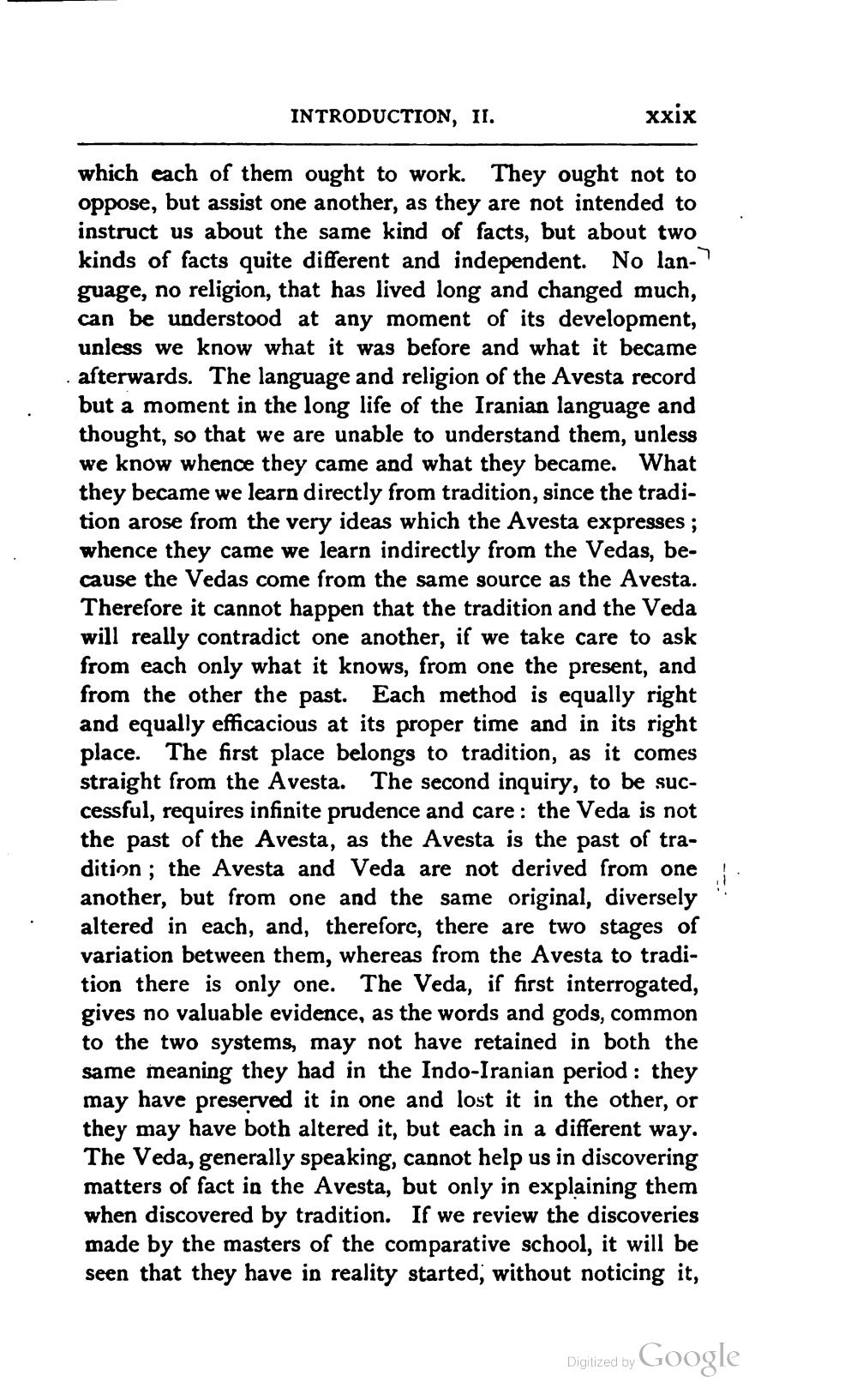________________
INTRODUCTION, II.
xxix
which each of them ought to work. They ought not to oppose, but assist one another, as they are not intended to instruct us about the same kind of facts, but about two kinds of facts quite different and independent. No language, no religion, that has lived long and changed much, can be understood at any moment of its development, unless we know what it was before and what it became afterwards. The language and religion of the Avesta record but a moment in the long life of the Iranian language and thought, so that we are unable to understand them, unless we know whence they came and what they became. What they became we learn directly from tradition, since the tradition arose from the very ideas which the Avesta expresses ; whence they came we learn indirectly from the Vedas, because the Vedas come from the same source as the Avesta. Therefore it cannot happen that the tradition and the Veda will really contradict one another, if we take care to ask from each only what it knows, from one the present, and from the other the past. Each method is equally right and equally efficacious at its proper time and in its right place. The first place belongs to tradition, as it comes straight from the Avesta. The second inquiry, to be successful, requires infinite prudence and care: the Veda is not the past of the Avesta, as the Avesta is the past of tradition ; the Avesta and Veda are not derived from one another, but from one and the same original, diversely altered in each, and, therefore, there are two stages of variation between them, whereas from the Avesta to tradition there is only one. The Veda, if first interrogated, gives no valuable evidence, as the words and gods, common to the two systems, may not have retained in both the same meaning they had in the Indo-Iranian period : they may have preserved it in one and lost it in the other, or they may have both altered it, but each in a different way. The Veda, generally speaking, cannot help us in discovering matters of fact in the Avesta, but only in explaining them when discovered by tradition. If we review the discoveries made by the masters of the comparative school, it will be seen that they have in reality started, without noticing it,
Digitized by Google




